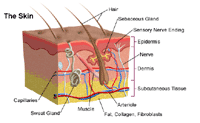What are the different types of tumor biopsies?
A biopsy is a procedure performed to remove tissue or cells from the body for examination under a microscope. Some biopsies can be performed in a physician’s office, while others need to be done in a hospital setting. In addition, some biopsies require use of an anesthetic to numb the area, while others do not require any sedation.
Biopsies are usually performed to determine whether a tumor is malignant (cancerous) or to determine the cause of an unexplained infection or inflammation. The following are the most common types of biopsies:
- Endoscopic biopsy – this type of biopsy is performed through a fiberoptic endoscope (a long, thin tube that has a close-focusing telescope on the end for viewing) through a natural body orifice (e.g., rectum) or a small incision (e.g., arthroscopy). The endoscope is used to view the organ in question for abnormal or suspicious areas, in order to obtain a small amount of tissue for study. Endoscopic procedures are named for the organ or body area to be visualized and/or treated. The physician can insert the endoscope into the gastrointestinal tract (alimentary tract endoscopy), bladder (cystoscopy), abdominal cavity (laparoscopy), joint cavity (arthroscopy), mid-portion of the chest (mediastinoscopy), or trachea and bronchial system (laryngoscopy and bronchoscopy).
- Bone marrow biopsy – this type of biopsy is performed either from the sternum (breastbone) or the iliac crest hipbone (the bone area on either side of the pelvis on the lower back area). The skin is cleansed and a local anesthetic is given to numb the area. A long, rigid needle is inserted into the marrow, and cells are aspirated for study; this step is occasionally uncomfortable. A core biopsy (removing a small bone “chip” from the marrow) may follow the aspiration.
- Excisional or incisional biopsy – this type of biopsy is often used when a wider or deeper portion of the skin is needed. Using a scalpel (surgical knife), a full thickness of skin is removed for further examination, and the wound is sutured (sewed shut with surgical thread). When the entire tumor is removed, it is called excisional biopsy technique. If only a portion of the tumor is removed, it is called incisional biopsy technique. Excisional biopsy is often the method usually preferred when melanoma (a type of skin cancer) is suspected.
- Fine needle aspiration biopsy – this type of biopsy involves using a thin needle to remove very small pieces from a tumor. Local anesthetic is sometimes used to numb the area, but the test rarely causes much discomfort and leaves no scar. FNA is not used for diagnosis of a suspicious mole, but may be used to biopsy large lymph nodes near a melanoma to see if the melanoma has metastasized (spread). A computed tomography scan (CT or CAT scan) — an X-ray procedure that produces cross-sectional images of the body — may be used to guide a needle into a tumor in an internal organ such as the lung or liver.
- Punch biopsy – these biopsies involve taking a deeper sample of skin with a biopsy instrument that removes a short cylinder, or “apple core,” of tissue. After a local anesthetic is administered, the instrument is rotated on the surface of the skin until it cuts through all the layers, including the dermis, epidermis and the most superficial parts of the subcutis (fat).
- Shave biopsy – this type of biopsy involves removing the top layers of skin by shaving it off. Shave biopsies also are performed with a local anesthetic.
- Skin biopsy – these biopsies involve removing a sample of skin for examination under the microscope to determine if melanoma is present. The biopsy is performed under local anesthesia. The patient usually just feels a small needle stick and a little burning for about a minute, with a little pressure, but no pain.

